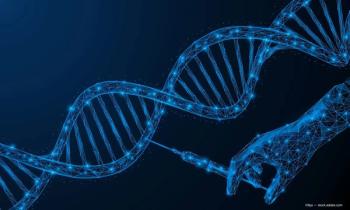
The first steps in gene therapy for achromatopsia
Mark Pennesi, MD, PhD, reports during ARVO 2021 that preliminary results have shown that AGTC-401 and AGTC-402 seem safe and well tolerated in patients with ACHM.
Reviewed by Mark E. Pennesi, MD, PhD
The preliminary results of 2 ongoing phase 1/2 clinical trials evaluating the effects of subretinal gene therapies for achromatopsia (ACHM) indicate that both drugs, AGTC-401 and AGTC-402 (Applied Genetic Technologies Corp. [AGTC]), seem safe and well tolerated in patients with ACHM.
It is noteworthy that data from both studies are showing encouraging signs of biologic activity, according to Mark E. Pennesi, MD, PhD, associate professor of ophthalmology and Molecular and Medical Genetics Kenneth C. Swan Endowed Professor, division chief, Ophthalmic Genetics, Oregon Health and Science University Casey Eye Institute, Portland, OR.
ACHM is an autosomal recessive disease that causes a cone dysfunction syndrome, with the bulk of the mutations in 2 genes, CNGA3 and CNGB3.
Two clinical trials of the affected genes are underway, one is a long-term follow-up gene therapy study for achromatopsia CNGB3 and CNGA3, at the Moorfields Eye Hospital, London, and Kellogg Eye Center, Ann Arbor, MI, and the other is a natural history study of achromatopsia CNGB3 and CNGA3, at Moorfields Eye Hospital.
Patients with ACHM have poor central vision in the range of 20/100 to 20/200, nystagmus, color vision defects, photophobia, and high myopia. The disorder is nonprogressive in contrast to cone-rod dystrophy.
Electroretinography (ERG) shows severely decreased cone function but normal rod function, Pennesi explained.
ACHM-CNGA3 and CNGB3 trials
Both trials are phase 1/2, open-label, dose-escalation studies using recombinant adeno-associated virus (rAAV) viral vectors.
The enrolled patients were treated with 1 subretinal injection of either AGTC-401 (rAAV2tYF-PR1.7-hCNGB3; 26 patients) or AGTC-402 (rAAV2tYF-PR1.7-hCNGA3; 19 patients) into the macular region on 1 eye (study eye). All patients were 14 years or older.
Participants were sequentially assigned to 1 of 4 dosing groups in both studies. The primary study endpoints were changes in the best-corrected visual acuity, light discomfort testing by ocular photosensitivity analyzer, ERG and multifocal ERG, retinal sensitivity by static perimetry and microperimetry, color vision testing using the Farnsworth D15 and color assessment and diagnosis tests, and patient-reported outcomes using the quality-of-life Visual Light Sensitivity Questionnaire-8.
Results
Most of the ocular adverse events noted in the study were mild to moderate in nature. Of those that occurred in more than 20% of eyes, the most common were conjunctival hemorrhages and likely were related to the surgical procedure.
Vitreous and anterior chamber cells were seen more frequently in the ACHM-CNGB3 group.
In the CNGA3 group, 2 patients had a serious adverse event, one was a macular hole that was related to the study surgery and the other was ocular hypertension that was related to the steroids prescribed and was controlled with modification of the steroids.
One patient in the CNGB3 group had increased intraocular pressure that was steroid-related and controlled with modification of the steroids.
Both patients with elevated pressures underwent a glaucoma filtering surgery.
Pennesi summarized that the preliminary results showed that the study agents, AGTC-401 and AGTC-402, administered via subretinal injection in the ongoing phase 1/2 CNGA3 and CNGB3 clinical trials are safe and well tolerated.
No significant immunologic responses to the vector or capsid occurred. The preliminary results also showed improvements in photosensitivity and 2-color dark light-adapted perimetry in 3 of the 16 patients in the CNGA3 study and 7 of the 16 patients in the CNGB3 study in the higher dose groups. Enrollment of young patients aged 4 to 8 years is ongoing.
--
Mark E. Pennesi, MD, PhD
E: [email protected]
This article is adapted from Pennesi’s presentation at the Association for Research in Vision and Ophthalmology virtual annual meeting. He is a consultant to Applied Genetic Therapies Co.
Newsletter
Don’t miss out—get Ophthalmology Times updates on the latest clinical advancements and expert interviews, straight to your inbox.













































